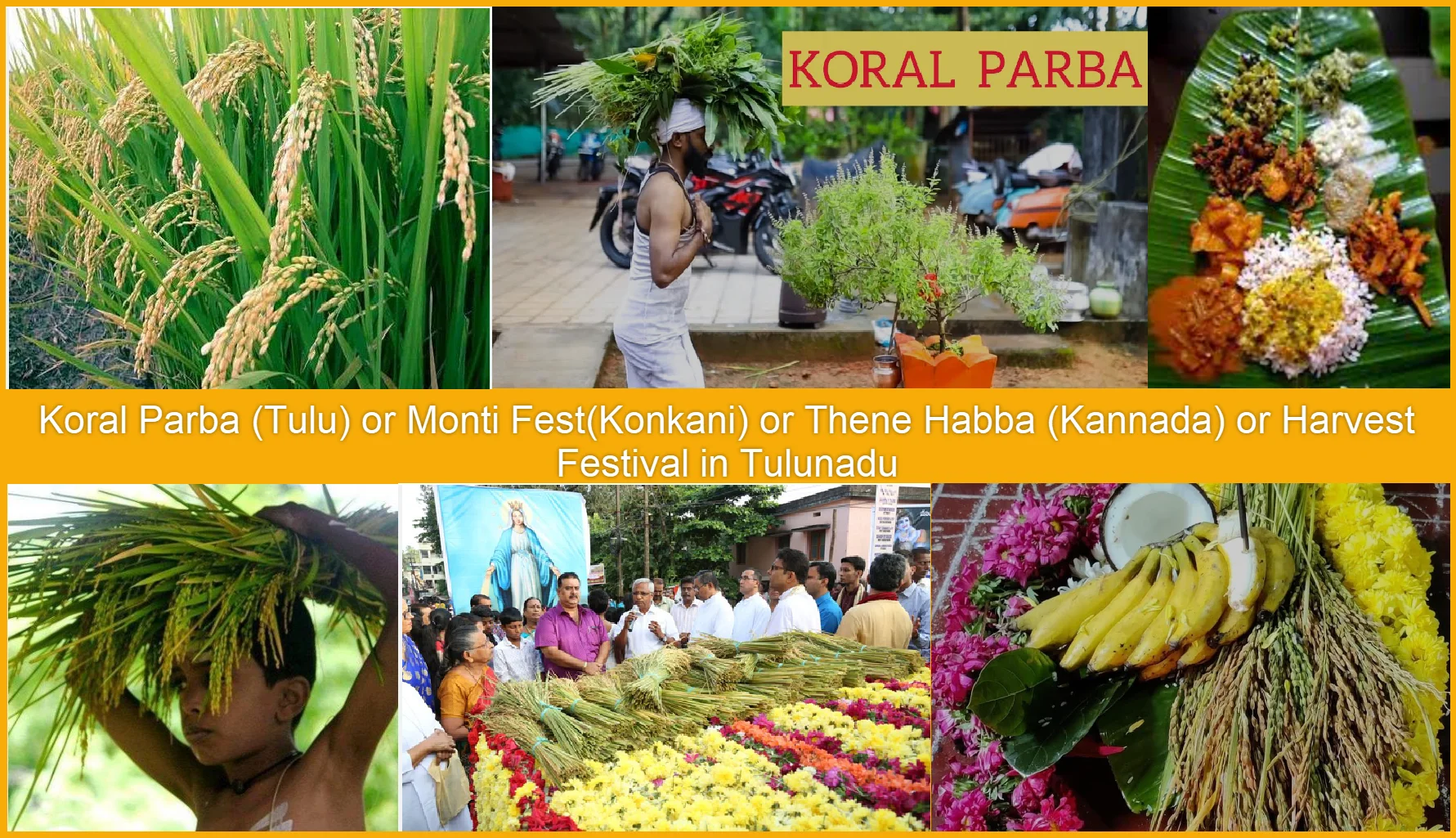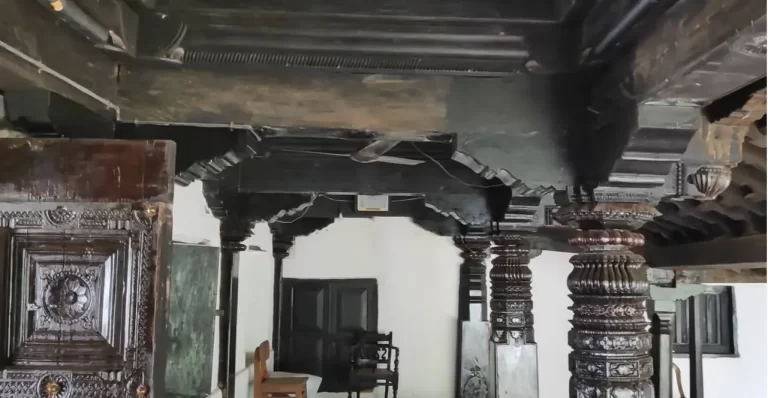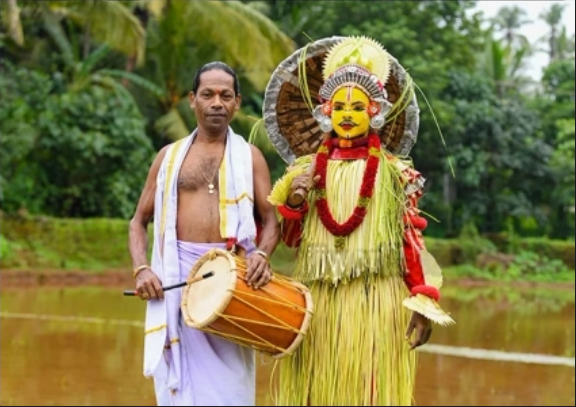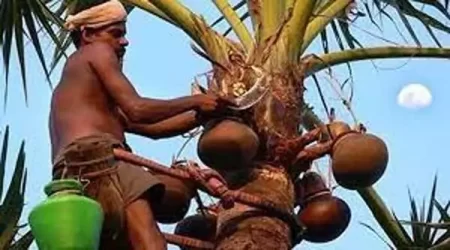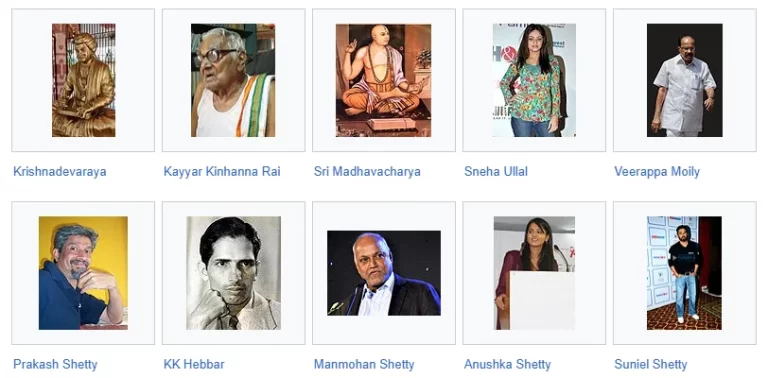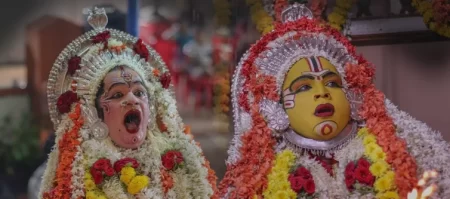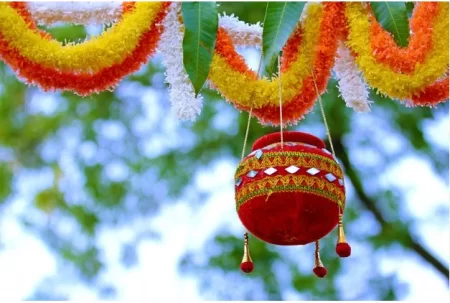Koral Parba
Koral Parba or “Thene Habba” is an important celebration in Tulunadu region. This festival is celebrated in different ways by the people across the region but the fundamental reason for the celebrations are the same. There may be differences in the timing of the celebrations depending on local traditions. This Habba is also called in different names as Puddar or ’illa dinjavune’ (filling house with grains) or ‘Koral Parba’.
“Koral” is derived from a Tamil word “Korali”, a synonym for a millet called “thinai”. This Koral is known as ‘thene’ in Tulu, which is a variant of the Tamil word “thinai”, the millet. This festival in Tulu is also called Thene Parba.
Most of our festivals are related or connected to agriculture i.e. our crop and Harvest. This is one such festival celebrated in Tulunadu region before the harvest of the first crop of the season. This festival is celebrated in September, before the harvest of ‘Enel’ crops. Usually, it is celebrated on the next day of Cauvery Sankramana i.e. the first day of Nirnal month as per the Tulu calendar. It is a tradition in Tulunadu region to prepare Manni as a healthy sweet dish on Sankramana day. Some families do this on Chaturthi (Ganesh Chathurthi) as well.
On Koral Parba day
All family members bathe early in the morning on this day and clean the entire house including the yard outside (‘jaal’ in Tulu). They also wash their equipment used regularly for cultivation and household activities. Before eating any food, male members of the family go to their fields to bring Koral (ear or spike of paddy corn). Head of the family first offers his prayer to the crop and field and cuts the first ‘Thene’ (Koral-grown ear or spike of the paddy corn).
All other members, including small girls follow him with a handful of ‘Thene’ each. The number of collected ear of corns (Thene) should be odd i.e. 3,5,7 or 9. When they bring home the ‘Thene’, they chant ‘Poliyo Poli’ as a prayer for prosperity and good tidings.
The family members keep the ‘Thene’ carried with so much devotion, in front of the ‘Tulasi’ Katte or Kuladevatha on a banana leaf along with all the cleaned equipment used for agricultural purposes. Different kinds of leaves such as mango, bamboo, jackfruit, betel leaves, skin of Aaladamara (a type of tree filled with milk), traditional flowers, arecanut along with different vegetables grown in the field are also added to the banana leaf along with the Koral.
All members of the family collectively pray there for the prosperity of family members, house and crop. This is called ‘Hosthu or illa dinjavune’. It is a ritual of honoring Mother Earth and paying gratitude to the food grains, mainly paddy.
Then the family members prepare small bunches of a set of all leaves together along with ears of the corn. This is tied at all the important places in the house such as entrance, poles, cowshed, household equipment, instruments, ploughs and vessels.
Puddar da Vanas
They cook the rice by adding odd number of new rice grains and enjoy lunch together along with many types of local dishes prepared on the occasion. This meal, popularly called “Puddar da Vanas”, is a celebration by itself with many flavorful dishes. “Menthe da Ganji”, a sweet dish prepared with rice & fenugreek seeds is one of the mandatory dishes among many.
An important part of this tradition is to first offer the meal, usually on a banana leaf, to the ancestors. This is accompanied by a small prayer by an elder of the family. The full meal after the prayer is kept outside waiting for a crow to sample the offering as mark of acceptance by the ancestors. The food is served to everybody after the crows start eating.
The interesting part of this Tulunadu tradition is that local Christians also celebrate it with equal fervor on 5th September every year and enjoy a hearty vegetarian “Puddar da Vanas”. They collect their “Koral” from the local church to conduct the ritual in their own way.
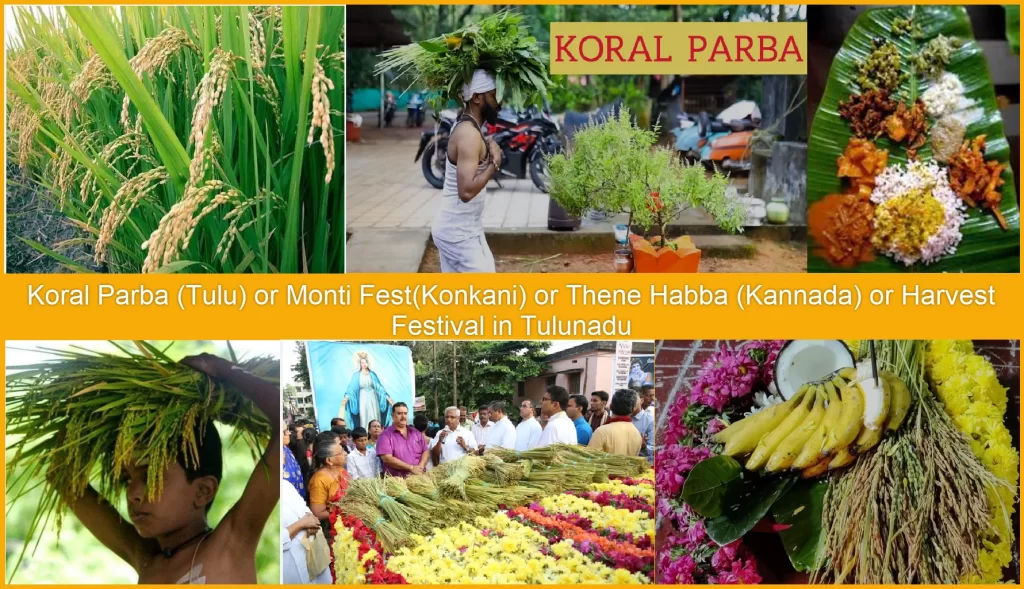
Monti Festival By Christians in Mangalore
Mangalorean Christians too celebrates Koral Parba, but in different way, which to celebrate the Nativity of the Blessed Virgin Mary as “Monti Fest”.
Monti is the Konkani name for Mother Mary. The Catholic church assigns a date for feasts and usually it is based on the date of a saint’s death, or if the date has a special meaning in the saint’s life, or some other meaningful event for a particular saint. In the case of the Nativity feast, it is celebrated on 8th of September, nine months after 8th of December, which is when the church celebrates the feast of the Immaculate Conception of Mary.
Konkani speakers of Mangalorean origin celebrate the nativity feast in a unique way. This feast day is celebrated along with the harvest festival on the same day as thanksgiving for the new crops. Feast preparations to honor Mother Mary start nine days prior along with novena prayers. Adults and children together attend novena prayers with fresh flowers as offering to Mary during the nine days leading up to the feast day. Children offer flowers as a token of love for the mother of our Savior and mother of all humankind. The devotees, including children with flowers and community leaders with freshly grown paddy corn, enter the church in a procession as an offering of the first bounty of nature to Mother Mary. A small statue of infant Mary is placed on a table in front of the altar. The paddy corn is placed next to the statue to be blessed and distributed to the congregation after mass, and children approach the table in a single line and throw flowers accompanied with the age-old hymns “Moriyek Hogolsian” and “Sokkod Sangatha Melyan” to express our love to the heavenly Mother.
St Anna, the mother of Mary, was barren until she was quite old. Her child is considered to be her journey from barrenness to first fruit. This can be one of the reasons why the nativity feast is also celebrated as a thanksgiving for the first harvest.
When the blessed paddy enters the house, it is placed on the altar with great respect next to a lit candle. This is symbolic of the hope of not starving for the rest of year. Once the meal is prepared some of the grains of paddy are peeled and crushed and mixed with milk. The milk is then drunk with prayers and devotion. The milk mixed with the new grain is called “Noven”. The oldest member in the house serves “Noven” to all. The new grain is also sent to missing family members who are away from home, so this feast also encourages family bonding and togetherness. Once the family members who are far from home receive the crop they too celebrate Monti fest within the next 8 to 10 days and consume the new grain.
Because Monti fest is also a harvest festival, only vegetarian food is served. Most of the families plant fresh vegetables at the beginning of the monsoon season and harvest is ready right in time for Monti fest so all homegrown vegetables are cooked on the feast day. An odd number of vegetable dishes are cooked and everyone is eager to prepare the most number of items on that day. The most awaited and can be considered the star the meal is the dessert dish “Vorn”. Vorn is supposed to be the tastiest Mangalorean sweet dish and it goes very well with the vegetarian cuisine. And because of the number of dishes prepared, the feast day’s special meal is served on a truly vegetarian plate that can hold all the dishes at once and that is the banana leaf.
Monti fest too takes back to my childhood days. It reminds me of how eagerly the parishioners waited for the nine days of novena prayers along with flower offerings. Three months before this feast, as soon as the monsoon season begins in June, as children our job was to start planting as many flower plants as possible. And the elders used to do the farming of paddy fields and growing of vegetable plants. All of this was done in preparation and anticipation of the nativity feast. Everybody’s main goal was to make sure we had enough flowers to offer for nine days of novena and enough vegetables to prepare as many vegetarian dishes as possible.
Another custom was to make sure the newly harvested crop yield was to be brought to a freshly cleaned house. So the cleaning of the house also began a few days before the festivities began. And because monsoon season was just ending, the front and backyards also had to be thoroughly cleaned.
And another tradition that was eagerly awaited by us as children was the receiving of sugarcane after mass on September 8th. That was the highlight of the day for us.
Now the time has changed so the way of celebration has also changed. Now people carry the flowers that they pick from their gardens and carry them into dinner plates. The joy of picking flowers during the rainy season, with the umbrella in one hand and the flower plate in the other, was just too good. These days because everyone is busy and families don’t have so many flowers in their gardens, flowers are bought from the market and carried in stylish baskets. Back in the days, only children would offer flowers but now even adults participate.
Tulunadu Koral Parba Video
Tulunadu Monti Fest
Go to Tulu News Page to read more about Tulu Nadu News, Events etc.
Go to Our Partner Website to book Self Drive Cars to drive in Mangalore, Udupi and Kasargod

